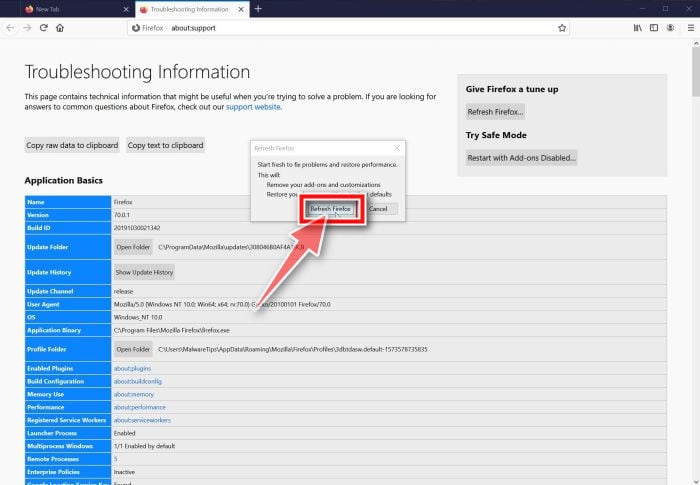Mozilla Firefox for Mac is a versatile and feature-packed browser with advanced security features that can hide shared user activity and has customizable privacy settings that protect your system from unwanted tracking and harmful software. Mozilla Firefox is perfect for casual searches as well as more complex queries. Download Mozilla Firefox for Mac now from Softonic: 100% safe and virus free. More than 6190 downloads this month. Download Mozilla Firefox for Mac latest version 2021. Get Firefox, a free web browser backed by Mozilla, a non-profit dedicated to internet health and privacy. Available now on Windows, Mac, Linux, Android and iOS. Download Firefox for Mac. User Interface and Theme. Safari is sticking to the trusted interface design for navigation. It hasn’t changed much in years. The default page shows the favorites tabs. This article explains how to download and install Firefox on a Mac. Installing Firefox on Mac Visit the Firefox download page in any browser (for example, Safari). It will automatically detect the platform and language on your computer and recommend the best version of Firefox for you. Outdated Browser.
The world's number 1 browser

Google Chrome is the most widely used web browser in the world. Users enjoy its fast loading speed, cross-device integration, and tabbed browsing. Google Chrome does not come installed as a standard on new Macs or PCs. Their native web browsers (Safari and Microsoft Edge, respectively) are automatically installed, forcing users to install Chrome themselves.
Seamless internet navigation
Chrome is an ideal browser to enjoy easy, coordinated online browsing across various devices.
Whether you have a new Mac or an older one, Google Chrome sets the bar high for web browsers. You want a browser that is safe, easy to use, syncs data and content across all your devices, and operates quickly. Google Chrome is the solution that over 63% of the world turns to and with good reason. Mac users have distinguished taste and as such, expect high quality in their hardware and software products. Google Chrome delivers this to Mac users with its low CPU usage, reliability, and overall browsing experience. It delivers a high-quality browsing experience to Mac users with its low CPU usage, reliability, tabbed browsing, cross-device syncing, and lighting fast loading speed.
Google Chrome for Mac has a laundry list of features, earning its spot as the top web browser of choice for both Mac and PC users. It offers thousands of extensions, available through the Chrome web store, providing Mac owners with even more functionality. Adobe Flash is also available when you install Chrome on your Mac. The overall appearance is professional and clean. Enjoy customized browser preferences including your homepage of choice, sync and Google services, Chrome name and picture, importing bookmarks and settings, autofill capabilities (passwords, payments, addresses, etc.), toolbars, font, page zoom, and startup settings. Chrome’s user interface is incredibly easy to navigate. Multi-tasking just got easier with tabbed browsing, which not only helps productivity, but looks clean and organized. Since Chrome can be downloaded on all of your devices (computers, phones, tablets), if you open a browser or perform a search on one device, Chrome will auto-sync that work stream on your other devices. If you look up a dinner recipe at work on your Mac but need the ingredient list at the grocery store? No problem - pull up the same tab within Chrome on your iPhone. Once you are home and ready to start cooking, just pull up the same Chrome recipe tab on your tablet. With the world moving faster than ever before, functionality like this can help make life a little easier.
Chrome’s password, contact information, and payment autofill capabilities are revolutionizing users’ online experience. Upon your consent, Chrome’s autofill feature will easily fill out your name, address, phone number, email address, passwords, and payment information. If it’s time to register your child for the soccer season but your wallet is downstairs, Google Chrome has your back, helping you easily fill in the data, so you can stay in your comfy chair. Chrome will only sync this data on your approved devices, so you can rest easy that your information is safe. CPU usage is immensely important when choosing a web browser. Keep your Mac’s CPU free by browsing with Google Chrome, maximizing overall system performance. Chrome for Mac is currently available in 47 languages. It can only be installed on Intel Macs, currently limiting its userbase. Mac users can manage how their browsing history is used to personalize search, ads, and more by navigating to their 'Sync Settings' within Chrome. Encryption options, auto-completion of searches and URLs, similar page suggestions, safe browsing, and enhanced spell check are also available within the settings tab, helping users feel more in control of their browsing experience. Users also have the option to 'help improve Chrome' by automatically sending usage statistics, crash reports, visited URLs, and system information to Google, or can easily opt out within Chrome’s settings.
Where can you run this program?
Google Chrome is available on MacOS X Yosemite 10.10 or later, Windows 7 or later, Android, and iOS devices. Chrome may successfully install on devices with lesser system requirements; however, Google only provides support on a system meeting the minimum system requirements.
Is there a better alternative?
For Mac users, Safari is the standard out-of-the-box browser installed on new devices. Most users prefer a web browser with better functionality than Safari. Chrome is harder on a Mac’s battery life than Apple’s native Safari browser. However, Chrome comes out ahead of Safari in terms of browsing speed, extensions, and video loading capabilities. Safari does have many of Chrome’s features such as tab syncing across devices and auto-filling based on previous searches. Mozilla Firefox is another commonly used web browser among Mac users, though its memory usage knocks it down on the list of competitors. The main draw to Mozilla Firefox over Chrome is that because Firefox is open source, nothing fishy is going on behind the scenes. Google is notorious for capturing and using data which rightfully makes people uncomfortable.

Our take
Mac users tend to do things their own way. You’ve opted for the non-mainstream computer hardware, so using the native installed Safari browser seems in character. Safari’s minimalist look draws Mac users in as well. Google Chrome is much more 'going along with the crowd'. Putting that aside, Mac owners should dig into what they really use their web browsers for, and determine if data privacy or features is more important to them. Better yet, why not have two browsers?
Should you download it?
Yes. For Mac users, Google Chrome’s quick speed and helpful features makes it an excellent web browser choice. Google’s controversial collection of personal and usage data is sure to make some pause on whether to install Chrome or not. However, if you are comfortable or indifferent to Google’s data collection, go for it; the browser's overall functionality is impressive.
Highs
- Fast loading speed
- Thousands of extensions available via the chrome web store
- Tabbed browsing synced across devices
- Convenient auto-fill
Lows
- Available on MacOS X Yosemite 10.10 or later
- Google’s aggressive data collection practices
Google Chromefor Mac
93.0.4577.63
I’ve seen a lot of cluttered and disorganized Downloads folders on Mac. A lot. For me, at least, it’s much easier to keep my downloaded files cleaned up and organized if I download to my Desktop which I’m constantly looking at then to download to the downloads folder which I don’t pay attention to until it gets too cluttered to find anything.

So if you’re the same way, it’s good to know that you can change where Safari, Firefox, and Chrome automatically put their downloads.
So for today’s article, let’s go over how to change the default download folder on the Mac!
Luckily, the process of changing the default download directory pretty similar in the three main Mac browsers.
Change the Default Download Location in Safari
- Open the Safari app and click on the Safari drop-down menu at the top left.
- Choose Preferences.
- Make sure General tab is selected and then change the File Download Location to wherever you want.
As you can see, I’ve got mine set to “Desktop,” but you can pick an alternate location with that “Other” choice. Clicking “Other” will bring you to the familiar macOS open/save dialog box, from which you can select any folder you want to use.
If you’re feeling really fancy, you could instead change that toggle shown in my second screenshot above to “Ask for each download,” which will mean that you can file away everything you download exactly where you want it to go, every time. While this is a nifty feature but it can get cumbersome to have to choose a download location for each and every download you do.
Microsoft For Mac
Change the Default Download Location in Firefox
With the Firefox browser, you’ll start the same way as you did with Safari.
- Launch Firefox and click on its named menu(i.e. the FireFox pulldown menu) in the upper lefthand corner.
- Select Preferences.
- Under the General tab, at the label: Save files to click choose and select the folder you want your downloads to go to.
Again, the “Always ask me where to save files” radio button you see above will make Firefox ask you each time you initiate a download.
Change the Default Download Location in Chrome
Google made it just a teeny bit harder to change your default downloads folder in the Chrome browser, but the steps begin the same way as the other two browsers.
- Launch Chrome and select the Chrome menu from the top of your screen.
- Select Preferences.
- Scroll down the settings on the side menu until you see Advanced. Click on it.
- Choose Downloads.
- Click on Change next to Location and select the folder you want your downloads to go to.

As with Safari and Firefox, there’s a choice to make the browser ask you where to put the file you’re downloading every time.
As Steve Jobs used to say, “Oh yeah, there’s one more thing.”
Mail also uses the Downloads folder to store attachments you save, so if you’d like to be really thorough, you could change that, too.
Click on the Mail pulldown menu at the top of Mail then select Preferences. Next, under the General tab, you can change the download location just as you can with the web browsers:
So now that you’ve got all of your browsers (and Mail!) set to do exactly what you need them to, you can go forward knowing that your Downloads folder will never get too cluttered and disorganized again. Getting things done is so much easier when you stay organized.
If you’re a Mac user and enjoyed this article, you might want to check out this TechJunkie article: How To Flush the DNS in Mac Mojave.
Can You Download Firefox On A Mac Laptop
Do you have any tips or tricks for managing downloads on your Mac? If so, we’d love to hear from you in a comment below!